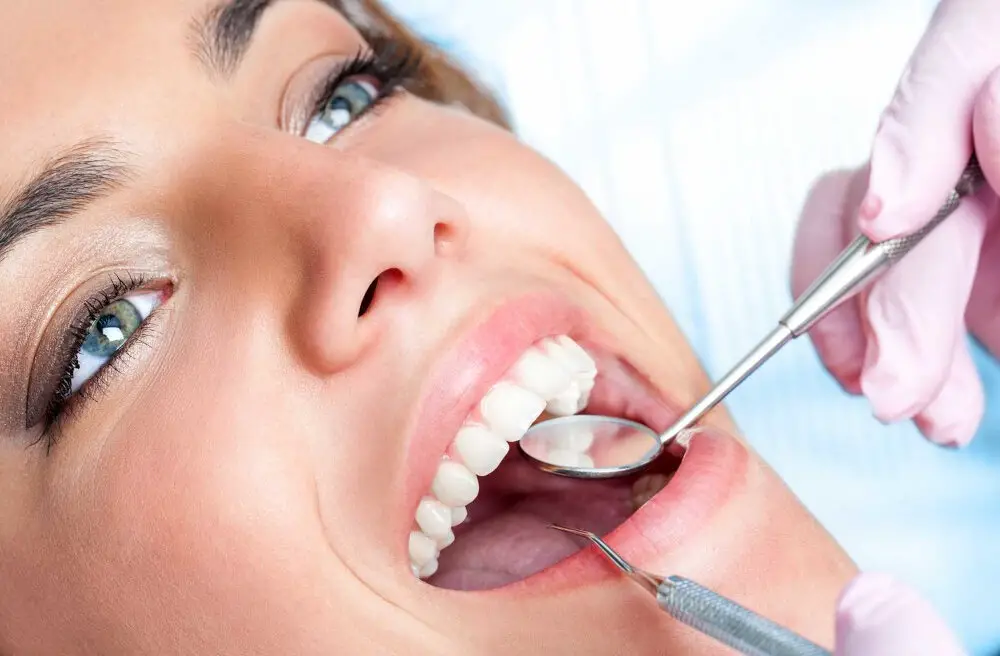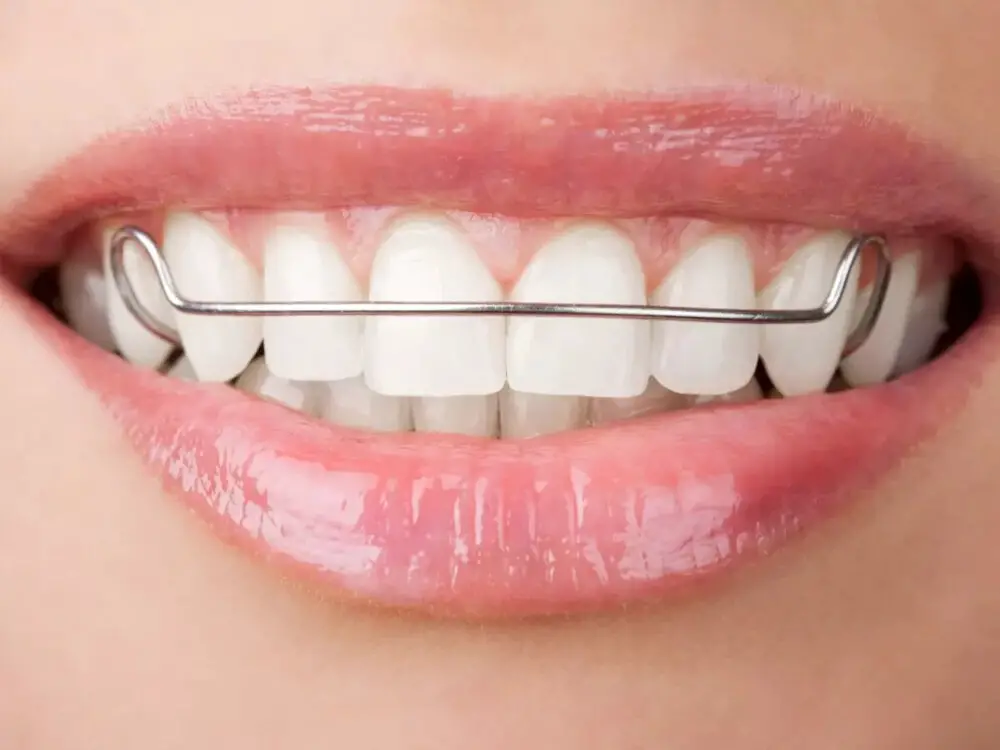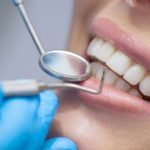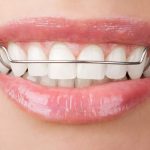How Often Should You Whiten Your Teeth? A Dentist’s Recommended Guide

Having a bright and white smile is something that most people strive for. However, over time, our teeth can become stained and discolored due to various factors such as aging, diet, and lifestyle habits. Teeth whitening has become a popular cosmetic dental procedure to help restore the natural brightness of teeth, but many people are unsure of how often they should whiten their teeth. In this article, we will explore the recommended guidelines from a dentist on how often you should whiten your teeth, as well as factors to consider before undergoing the procedure. Teeth whitening can be done in a variety of ways, including in-office treatments, at-home treatments, and over-the-counter products. While these methods can be effective, they can also cause damage to the tooth enamel if used too frequently or improperly. It’s essential to understand the appropriate frequency of teeth whitening to achieve the desired results while also maintaining the health of your teeth. By following the recommendations of a dentist, you can ensure that your teeth remain healthy, bright, and white for years to come.
Teeth whitening is a cosmetic dental procedure that involves the removal of stains and discoloration from the teeth, resulting in a brighter and more attractive smile. There are various methods of teeth whitening available, including in-office treatments, at-home kits, and over-the-counter products. In-office treatments are typically more effective and faster, while at-home kits and OTC products may take longer to show results. The process involves the application of a whitening agent, such as hydrogen peroxide or carbamide peroxide, to the teeth, which then breaks down stains and lightens the enamel. While teeth whitening is generally considered safe, it is important to follow the instructions carefully and consult with a dentist before undergoing any whitening procedure.
Maintaining white teeth is not only a cosmetic concern but also an indicator of good oral health. A bright, white smile can boost one’s confidence and self-esteem, making them feel more attractive and approachable. Moreover, having clean white teeth implies that one has good oral hygiene practices and cares about their dental health. It also helps prevent tooth decay, gum disease, and bad breath. Yellow or stained teeth, on the other hand, can indicate poor oral hygiene, smoking, or excessive consumption of coffee, tea, or wine. Therefore, regular teeth whitening can help maintain a bright and healthy smile, giving one the confidence to face the world with a beautiful and healthy smile.
Factors Affecting How Often You Should Whiten Your Teeth

The frequency of teeth whitening depends on a variety of factors, such as the type of whitening treatment, the individual’s dental hygiene practices, and lifestyle habits. Generally, dentists recommend teeth whitening once or twice a year, but this varies depending on the patient’s unique circumstances. For example, patients who smoke, consume coffee, tea, or red wine regularly, or have poor dental hygiene may require more frequent whitening to maintain a bright smile. Another important factor to consider is the type of whitening treatment used. Over-the-counter products, such as whitening strips or toothpaste, may require more frequent use to achieve desired results compared to professional in-office treatments. Moreover, patients who undergo professional in-office treatments may not need to whiten their teeth as often as those who use at-home products. Ultimately, the frequency of teeth whitening should be determined by a dentist who can evaluate the patient’s dental health and recommend a personalized whitening plan that meets their needs.
The natural tooth color is determined by the thickness and translucency of the enamel, as well as the color of the underlying dentin. Enamel is typically a translucent white, but the thickness can vary from person to person and can affect the overall color of the tooth. Dentin, which is located underneath the enamel, can range in color from yellow to gray. Additionally, genetics, aging, and lifestyle factors such as diet and smoking can also impact the natural color of the teeth. It is important to remember that not everyone’s teeth are naturally bright white, and that a healthy, natural-looking smile is just as beautiful.
When it comes to maintaining the whiteness of your teeth, your lifestyle habits play a key role. Smoking, for instance, is one of the most common culprits that can not only stain your teeth but also lead to numerous dental problems. Drinking coffee and tea can also cause discoloration over time due to their high acidity levels. Therefore, it is crucial to limit your consumption of these beverages or use a straw to minimize the contact of the liquid with your teeth. Additionally, practicing good oral hygiene habits such as brushing and flossing daily can help prevent stains and keep your teeth healthy and bright.
Age is a significant factor when it comes to the frequency of teeth whitening. As we age, our teeth naturally become discolored due to years of wear and tear, dietary habits, and lifestyle choices. Teeth whitening can help reverse the effects of aging and restore a brighter, more youthful smile. However, the frequency of teeth whitening should be adjusted based on age and the condition of the teeth. Younger individuals may be able to whiten their teeth more frequently, while older individuals may need to take a more cautious approach to avoid damaging their teeth. It’s always best to consult with a dentist to determine the appropriate frequency of teeth whitening based on your age and individual needs.
Maintaining good oral hygiene habits is essential to achieving and maintaining a bright, healthy smile. Brushing teeth at least twice a day with fluoride toothpaste, flossing daily, and using mouthwash can help remove plaque and prevent cavities and gum disease. Additionally, avoiding smoking and limiting consumption of sugary and acidic foods and drinks can also benefit oral health. Regular visits to the dentist for cleanings and check-ups are also crucial for identifying and treating any potential problems early on. By prioritizing these habits, individuals can not only improve their smile’s appearance but also promote overall oral health.
There are various types of teeth whitening treatments available in the market, ranging from over-the-counter products to professional, in-office treatments. One of the most common types of whitening treatment is the use of hydrogen peroxide-based products that can be found in whitening toothpaste, gels, and strips. Another popular option is professional teeth whitening treatments, which are typically done in a dentist’s office using stronger concentrations of whitening agents. These treatments can help remove deep stains and provide more noticeable results. Additionally, there are also natural whitening remedies, such as charcoal and baking soda, that can be used as a gentler alternative to chemical treatments. However, it is important to consult with a dentist before trying any whitening treatment to ensure it is safe and effective for your teeth.
Dentist’s Recommendations for Teeth Whitening Frequency

Teeth whitening is a popular cosmetic dental procedure that many people opt for to achieve a brighter and more confident smile. However, it’s important to understand that over-frequent whitening can lead to enamel erosion and tooth sensitivity. Therefore, dentists recommend a specific frequency for teeth whitening based on individual needs and the type of whitening treatment. In general, dentists recommend getting professional teeth whitening done once every 6 months to a year. This time frame provides enough time for the teeth to recover from the whitening process and for the results to settle in. However, for those with more severe staining or discoloration, dentists may recommend more frequent treatments. At-home whitening kits are also available, but it’s important to follow the instructions carefully and not use them more frequently than recommended to avoid damaging the teeth. Ultimately, consulting with a dentist is crucial in determining the appropriate frequency of teeth whitening to avoid any potential harm to the teeth.
When it comes to teeth whitening, a general rule of thumb is to not overdo it. While it may be tempting to constantly whiten your teeth to achieve that bright, sparkling smile, it’s important to listen to your dentist’s recommendations. Over-whitening can cause damage to your tooth enamel and increase tooth sensitivity. It’s also important to maintain good oral hygiene practices, such as brushing twice a day and flossing daily, to prevent staining and discoloration in the first place. Your dentist can advise you on the best whitening options for your individual needs and help you achieve a healthy, confident smile.
When it comes to heavy smokers, it is important to understand that their teeth may require more frequent whitening treatments due to the staining caused by tobacco use. Therefore, it is recommended that heavy smokers undergo teeth whitening procedures every three to four months for optimal results. Additionally, for those with naturally darker teeth, it may take longer to achieve desired results. In this case, it is important to consult with a dentist to determine the appropriate frequency of teeth whitening treatments. Generally, it is recommended to undergo teeth whitening treatments every six months to maintain a brighter, healthier smile. However, individual circumstances may vary and it is important to follow the advice of a dental professional to ensure the best possible outcome.
Possible Risks of OverWhitening Your Teeth

Overwhitening your teeth can pose several risks that may not only damage your teeth but also affect your overall oral health. Teeth whitening treatments involve the use of chemicals that can cause sensitivity and irritation if used excessively. Your teeth may become overly sensitive, and you may experience discomfort while eating or drinking cold or hot items. Moreover, overuse of teeth whitening chemicals can lead to the thinning of enamel, which is the outermost layer of your teeth. This can cause your teeth to appear translucent and give them a yellowish hue. The thinning of enamel may also lead to tooth decay and sensitivity to heat and cold. Another risk of overwhitening your teeth is the potential damage to your gums. Teeth whitening chemicals can cause gum irritation and inflammation if they come into contact with your gums. This can lead to soreness, bleeding, and even infection in extreme cases. Overuse of teeth whitening products can also result in the erosion of gum tissue, which can cause your teeth to become loose and eventually fall out. Therefore, it is crucial to follow the recommended guidelines for teeth whitening treatments and avoid overusing them to maintain a healthy and beautiful smile.
Tooth sensitivity is a common problem that many people experience after teeth whitening. It is a sharp and sudden pain that occurs when you eat or drink something cold, hot, sweet, or acidic. This sensitivity is caused by the exposure of the dentin layer of the tooth, which is the layer beneath the enamel. The dentin contains microscopic tubules that lead to the nerve of the tooth. When these tubules are exposed, the nerve is stimulated, which causes pain. Some teeth whitening products contain ingredients that can cause tooth sensitivity, especially if they are used too frequently or for too long. To avoid tooth sensitivity, it is important to follow the instructions of your dentist and use whitening products in moderation.
Gum irritation is a common side effect that can occur after teeth whitening. The bleaching agents used in teeth whitening products can cause the gums to become sensitive and inflamed. Symptoms of gum irritation may include redness, swelling, and discomfort. In severe cases, the gums may even bleed. If you experience gum irritation after whitening your teeth, it is important to take steps to alleviate the symptoms. This may include using a desensitizing toothpaste, avoiding hot and cold foods and drinks, and scheduling a follow-up appointment with your dentist. It is also recommended to wait a few months before whitening your teeth again to allow your gums to fully recover.
A major concern with frequent teeth whitening is the weakening of tooth enamel. Enamel is the hard, protective outer layer of teeth that shields them from damage and decay. When teeth are whitened too often, the chemicals used in the process can strip away the enamel, leaving the teeth vulnerable to sensitivity, cavities, and other dental issues. It is important to consult with a dentist before undergoing any whitening treatment to ensure that it is done safely and without causing harm to the teeth. Protecting tooth enamel is vital for maintaining healthy teeth and a bright, beautiful smile.
Alternative Ways to Maintain White Teeth

While teeth whitening treatments can provide effective results, there are alternative ways to maintain white teeth. One of the simplest ways is to practice good oral hygiene. Brushing twice a day with fluoride toothpaste and flossing daily can help remove surface stains and prevent the buildup of plaque. Additionally, using a whitening toothpaste can help gently remove surface stains and maintain the brightness of your teeth. However, it’s important to note that these methods may not be as effective as professional teeth whitening treatments for more stubborn stains. Another way to maintain white teeth is to watch what you eat and drink. Foods high in sugar and acid, such as candy and soda, can cause enamel to wear down and lead to discoloration. Instead, opt for a diet rich in fruits, vegetables, and calcium-rich foods to strengthen your teeth and keep them healthy. Additionally, drinking plenty of water can help wash away food particles and prevent staining. If you do consume staining foods or drinks, try to brush or rinse your mouth afterward to minimize their effects.
Good oral hygiene practices are essential for maintaining healthy teeth and gums. Brushing teeth twice a day for at least two minutes with fluoride toothpaste is the first step towards achieving good oral hygiene. Flossing daily removes the plaque and food particles between teeth, which cannot be reached by a toothbrush. Using mouthwash after brushing and flossing helps to kill bacteria and freshen breath. Limiting sugary and acidic foods and drinks also helps to prevent tooth decay and erosion. Regular visits to the dentist for professional cleanings and check-ups are also important to detect and treat any dental problems early on. Incorporating these practices into a daily routine can help to maintain a healthy and bright smile.
While teeth whitening treatments can improve the appearance of your smile, it’s important to remember that proper dental hygiene and dietary habits play a crucial role in maintaining a bright, white smile. Consuming foods and drinks high in sugar, acidity, and pigmentation can lead to staining and discoloration of the teeth. To prevent this, it’s recommended to limit your intake of coffee, tea, red wine, and sugary snacks. Instead, opt for healthier options such as crunchy fruits and vegetables that can help scrub away surface stains. Additionally, drinking plenty of water can help wash away food particles and neutralize acid in the mouth, ultimately promoting a healthier and brighter smile.
If you’re looking for a way to improve the appearance of your teeth without resorting to teeth whitening, nonwhitening solutions such as veneers and bonding may be a viable alternative. Veneers are thin shells made of porcelain or resin that are bonded to the front surface of your teeth, while bonding involves the application of a tooth-colored resin material to the surface of your teeth to improve their appearance. Both of these options can be used to address a variety of dental issues, including chips, cracks, gaps, and discoloration. While these options aren’t specifically designed to whiten your teeth, they can still provide a noticeable improvement to the overall look of your smile.
The frequency of teeth whitening varies depending on several factors, including the individual’s oral health, dietary habits, and lifestyle choices. Regular consumption of foods and beverages that stain teeth, such as coffee, tea, and red wine, can lead to more frequent whitening treatments. Similarly, habits such as smoking or excessive alcohol consumption can also contribute to the need for more frequent whitening. On the other hand, those with good oral hygiene practices, a balanced diet, and limited exposure to staining agents may only need occasional whitening treatments. Ultimately, it’s important to consult with a dentist to determine the optimal frequency of teeth whitening based on individual circumstances.
Consulting with a dentist before starting any whitening treatment is crucial for maintaining the health of your teeth and gums. A dentist can assess your oral health and determine if you are a good candidate for teeth whitening. They can also provide guidance on the best whitening treatment for your teeth and advise you on how often you should whiten your teeth. This is important because overuse of whitening products can damage tooth enamel and cause sensitivity. A dentist can also address any underlying dental issues that may be causing discoloration, such as decay or gum disease, which may require treatment before whitening can be done safely. In short, consulting with a dentist is an essential step to ensure safe and effective teeth whitening.
Maintaining white teeth is not just about the frequency of teeth whitening but also about good oral hygiene practices. Brushing and flossing regularly, avoiding foods and beverages that stain teeth, and regular dental check-ups are all essential for keeping teeth bright and healthy. Using a whitening toothpaste or mouthwash can also help to maintain a whiter smile. It is important to note that over-whitening can damage teeth and cause sensitivity, so it is best to follow the recommendations of your dentist and avoid overuse of whitening products. By maintaining good oral hygiene habits and following the advice of your dentist, you can enjoy a bright, healthy smile for years to come.
Conclusion

In conclusion, maintaining a healthy and attractive smile is important, and teeth whitening is one way to achieve this. However, it is essential to follow the dentist’s recommended guidelines on how often to whiten your teeth. Overusing whitening products can damage your teeth and gums and lead to sensitivity and discomfort. It is best to consult with your dentist to determine the appropriate frequency of teeth whitening based on your dental health and individual needs. By following their advice and practicing good oral hygiene, you can enjoy a beautiful smile that lasts a lifetime.







